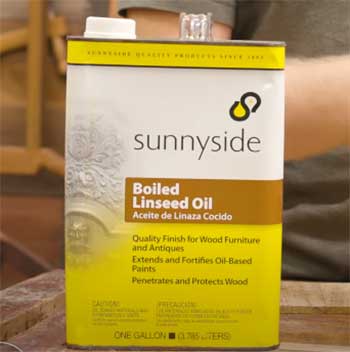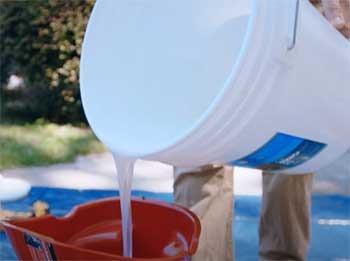When oiling a specific piece of furniture or wood at your house is concerned, people get confused on deciding whether to use Shingle Oil or Linseed oil.
Both are considered good, but shingle oil doesn’t leave that black appearance on the shingles or wood pieces as linseed oil.
On the other hand, Linseed oil is less cheap than Shingle oil but might take much time to get harder on the surface it is applied. This guide will look closely into the several differences between these oils.
A Quick Comparison Table
| Specifications | Single Oil | Linseed Oil |
| Usage | Single oil is designed to be used on Shake roofs, Wood siding, Log Homes, Fences, etc. | It is often used as a preservative oil for wood, varnishes, concrete, stains, and other applications |
| Durability | High | Medium |
| Water Resistance | High | Low |
| Color Changing Over Time | Gives a Clear finish when it dries | Turns yellow or sometimes makes the surface black on which it is applied |
| Getting Hard Timing | Faster | Slower |
| Viscosity Level | Low | High |
| Pricing | Expensive | Cheaper |
Key Differences Between The Shingle Oil And Linseed Oil
- Usage

The purpose of both oils is somewhat similar because both are used to keep an extra layer of protection on your home furniture.
A single oil can be purchased from multiple brands out there. But its sole purpose will remain the same.
A shingle oil from Sinclair or Chevron always best penetrates through the wooden surface to enhance the solidity as well as durability of the wood.
It protects those surfaces from getting affected by the sun and rain which could disturb the value of your furniture.
You can use Shingle oil for wooden fencing, log homes, shake roofs, wood siding, and more.
On the other hand, Linseed oil is usually extracted from the flax seed. It is considered one of the most useful natural oils available. You can use Linseed oil as a preservative for varnishes, wood, concrete, and stains and as an ingredient in paints.
Moreover, Linseed oil is also used in inks, soaps, and linoleum.
Undoubtedly, linseed oil is eco-friendly. When used in the Raw Form, it might take several days to get applied or dry on furniture.
That’s why sometimes it is impractical to use it on furniture.
- Durability
Shingle oil can stay longer when applied to your desired wooden or furniture pieces.
Because the oil ensures longer durability than any other out there.
However, you may not find the Linseed oil attaining the same durability because it is not that tough oil. It can turn into a clogged form and then start removing from the surface it was applied.
- Water Resistance
Shingle oil proves itself to be better water resistant than Linseed oil. It is because when you apply the shingle oil on that wood surface, there will be no attack of water, sun, or stains directly affecting the structure of your furniture piece.
However, that’s not the case with linseed oil. Linseed oil can get affected by water; ultimately, the wood surface may absorb that water if there is any attachment.
So, keep those products from which you have applied the linseed oil.
- Color Changing Over Time

Multiple customers who have used linseed oil claim that it turns a yellowish color or turns the surface black onto which it is applied over a longer run.
And that’s true. Linseed oil cannot maintain the product’s original shape when applied over a significant period.
It will ultimately turn into either a yellow or black shape.
However, Shingle Oil doesn’t do that. It keeps the original shape of that wooden surface when it gets dried.
So, applying shingle oil means not losing the benefit of having the original shape of that furniture piece.
- Getting Hard Timing
Oil has different properties, so it sometimes takes a good time to adjust itself to the surface to you have applied it.
That said, Shingle oil takes less time to adjust to the surface on which it is applied.
However, when you apply the linseed oil in raw form to your furniture items, it may take more time to dry.
- Viscosity Level
Shingle oil is usually less viscous when you buy it from multiple brands. Being less viscose means the oil will not get clogged or turn into a hard surface and will start removing eventually from that wooden surface.
However, Linseed oil may not have the same properties and might not stay for longer on the surface you apply it.
- Pricing
If the price is concerned, but you still want to oil those wooden components or parts available in your house, you must go for the Linseed oil.
Because in all metrics, this oil is less expensive than Shingle oil. It is because shingle oil is usually provided through multiple sellers. So, it has different price tags according to its desire.
Which Oil Is Better For You?
Judging from this comparison, I would always recommend getting Shingle oil because it is good against water, sunlight, and stains and dries quickly.
Moreover, it doesn’t turn a black or yellowish color. However, if that furniture piece is not that important to you, you can look forward to the linseed oil, which comes at a lower price.
So, the choice will always be yours.
Frequently Asked Questions (FAQ)
Shingle oil is suitable for roofs, log homes, wooden fencing, wood siding, etc.
This oil is a water-white and low-viscosity oil you can find in the market to apply on various home units made of wood.
According to Cedarroofcoatings.com, using TWP® 200 Series oil is always better for cedar shingles. These oils have excellent water resistance features and strong light or ultraviolet protection.
When Linseed oil is compared with Tung oil, Tung is always better. It doesn’t turn yellow; the oil dries quickly, producing good water and ultraviolet light resistance.
Final Thoughts
Whether you are using any oil for wooden furniture or fencing Shingle oil and Linseed oil will keep your furniture protected from several environmental and accidental flaws.
But choosing the right oil to apply on that furniture always matters.
I hope that the comparison will be enough to help you decide whether you should use Shingle or Linseed. But if you have queries, do let me know. Thanks for reading. Have a nice day!

If you would be so kind as offer your opinion: For wood gutters would you use shingle oil or linseed oil, and if linseed oil would you use boiled or raw. Thanks very much for your time. Scott